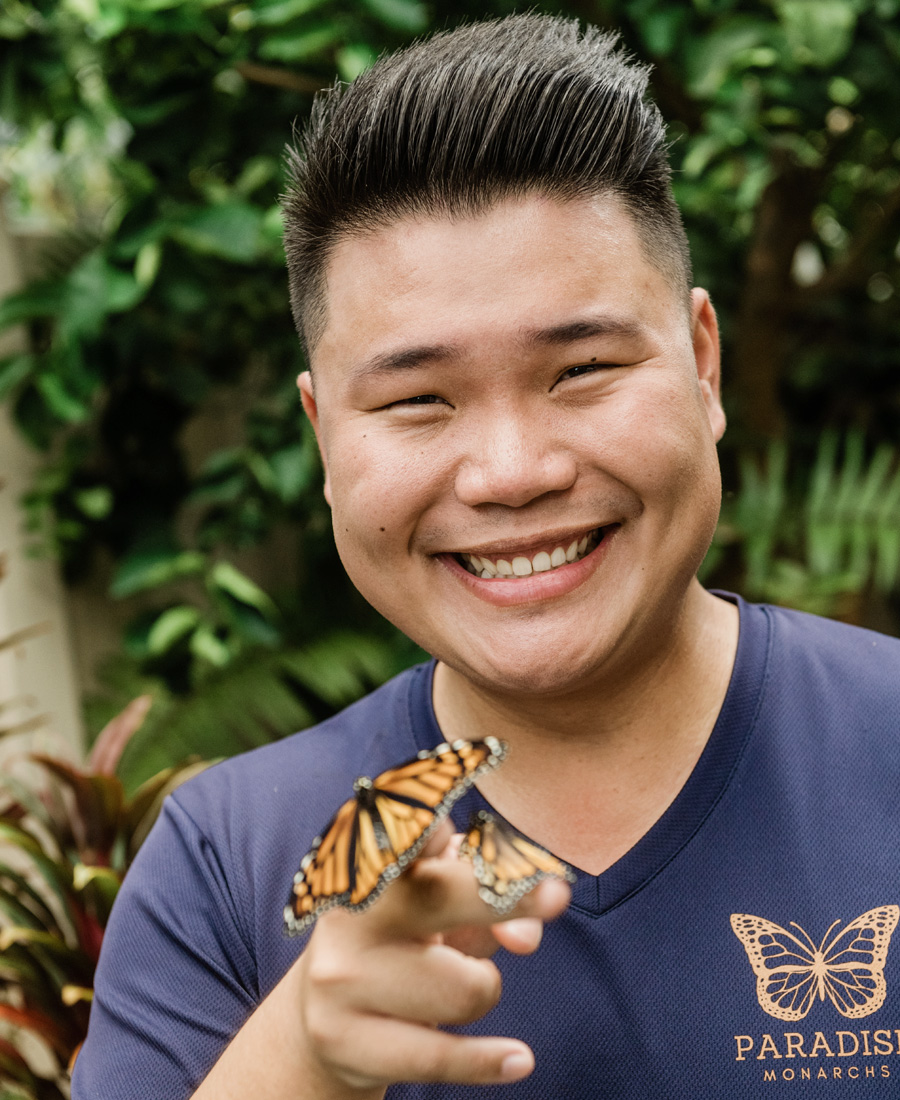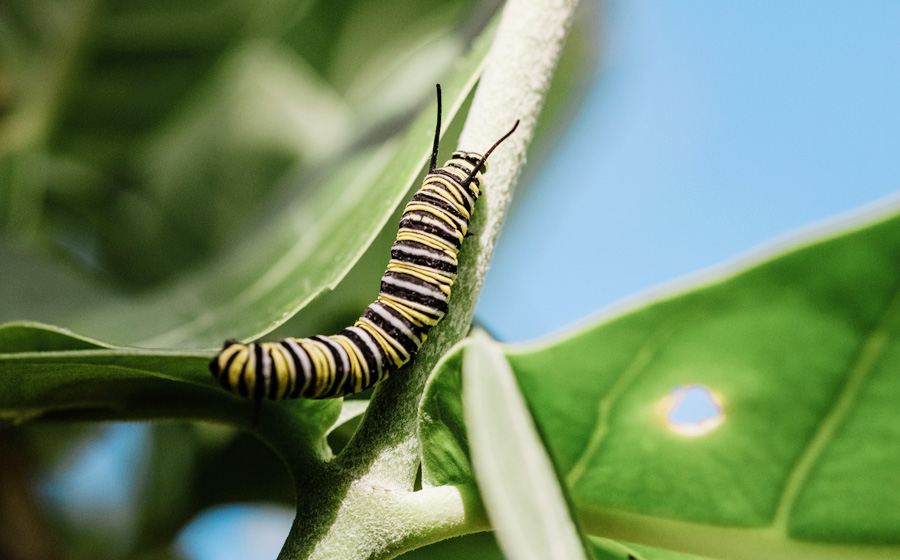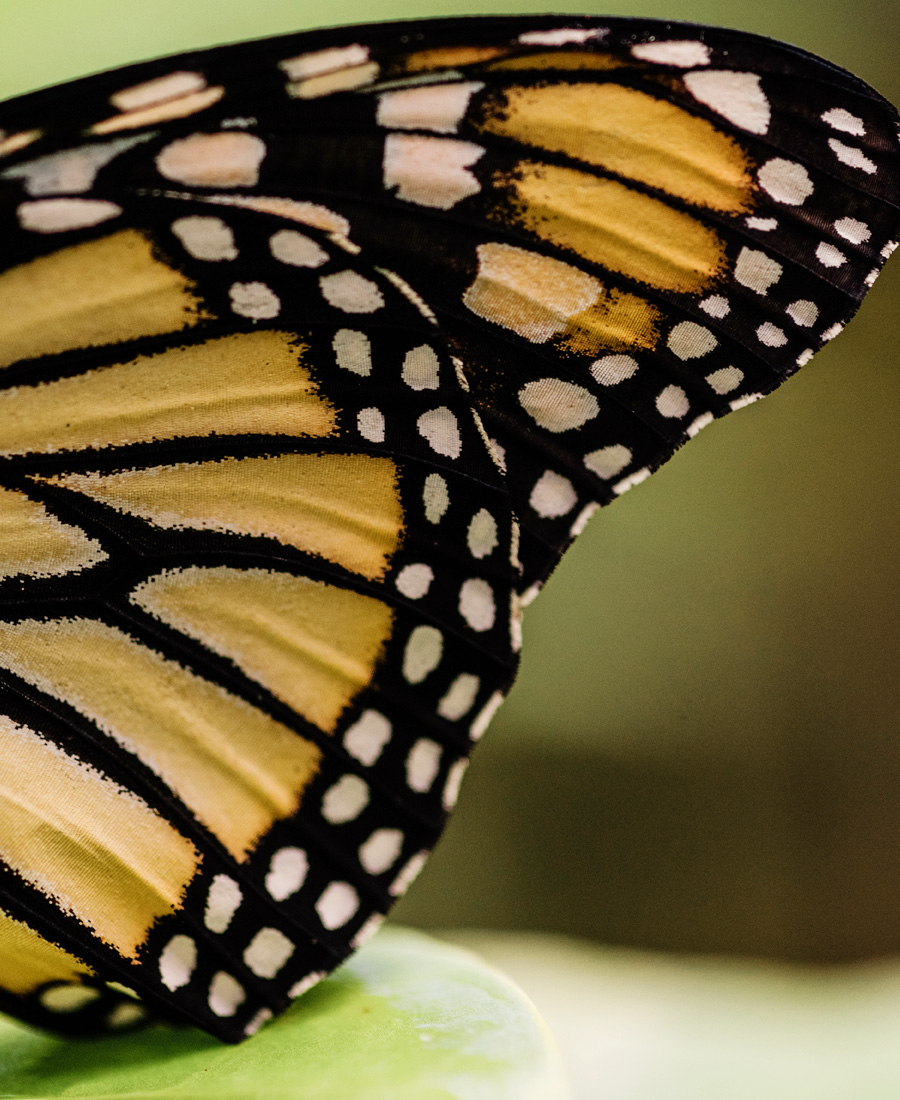An unexpected hobby takes wing for a former hospitality professional in ʻEwa Beach.
Up until two years ago, Henry Fang never would have imagined being in the butterfly business, much less playing an integral role in helping to increase Hawaiʻi’s monarch butterfly population. For Fang, like many others in the hospitality industry, the pandemic had put a pause on his career. That pause would be a serendipitous one.

Furloughed from his job at the Four Seasons Resort O‘ahu at Ko Olina, Fang spent his days tending to his herb and vegetable garden. But he soon grew bored. One night while browsing the internet, Fang read an article about the endangered monarch butterfly. Scientists reported that the monarch butterfly population had been in decline since the 1980s, with an almost 95 percent decline in the monarchs that overwinter in California. Such loss of monarchs meant a disruption in the natural ecosystem.

Something clicked in Fang. He wanted to do something. Learning that one could raise monarchs at home, he began growing milkweed plants (a food source for monarchs) and built an insect enclosure. Soon, wild monarchs were laying eggs on his plants, leading to caterpillars and chrysalises. “The coolest part was to see a butterfly go through metamorphosis. I had never seen that,” Fang says.
One day Fang crafted a “butterfly box” to house a chrysalis and gave it as a gift to his friend’s child so they could raise their own monarch. “It was just for fun,” Fang says. When the friend posted a photo of the box on social media, “it just took off,” he says. In the fall of 2020, Paradise Monarchs was born.

Fang’s brother Justin moved from Taiwan to help him with the burgeoning business. The brothers work with butterfly experts to learn best practices for raising healthy monarchs that will, in turn, help to bolster declining populations. In nature, Fang explains, less than 5 percent of monarch butterflies reach the final stage of metamorphosis due to predators and issues related to climate change, deforestation, and pesticides. Paradise Monarchs currently has a success rate of 98 percent. Fang estimates that more than 10,000 monarchs have been released into the wild since the company’s inception. “They have been thriving wild on all the Hawaiian Islands,” he says.

Future plans include moving to a bigger property to add more butterfly species as well as a garden for visitors to enjoy. And what of his pandemic-era herb and vegetable garden? For now, it's filled only with milkweed.
In nature, less than 5 percent of monarch butterflies will reach the final stage of metamorphosis due to predators and issues related to climate change, deforestation, and pesticides. Paradise Monarchs currently has a success rate of 98 percent.
To learn more about Paradise Monarchs, visit: ParadiseMonarchs.com
